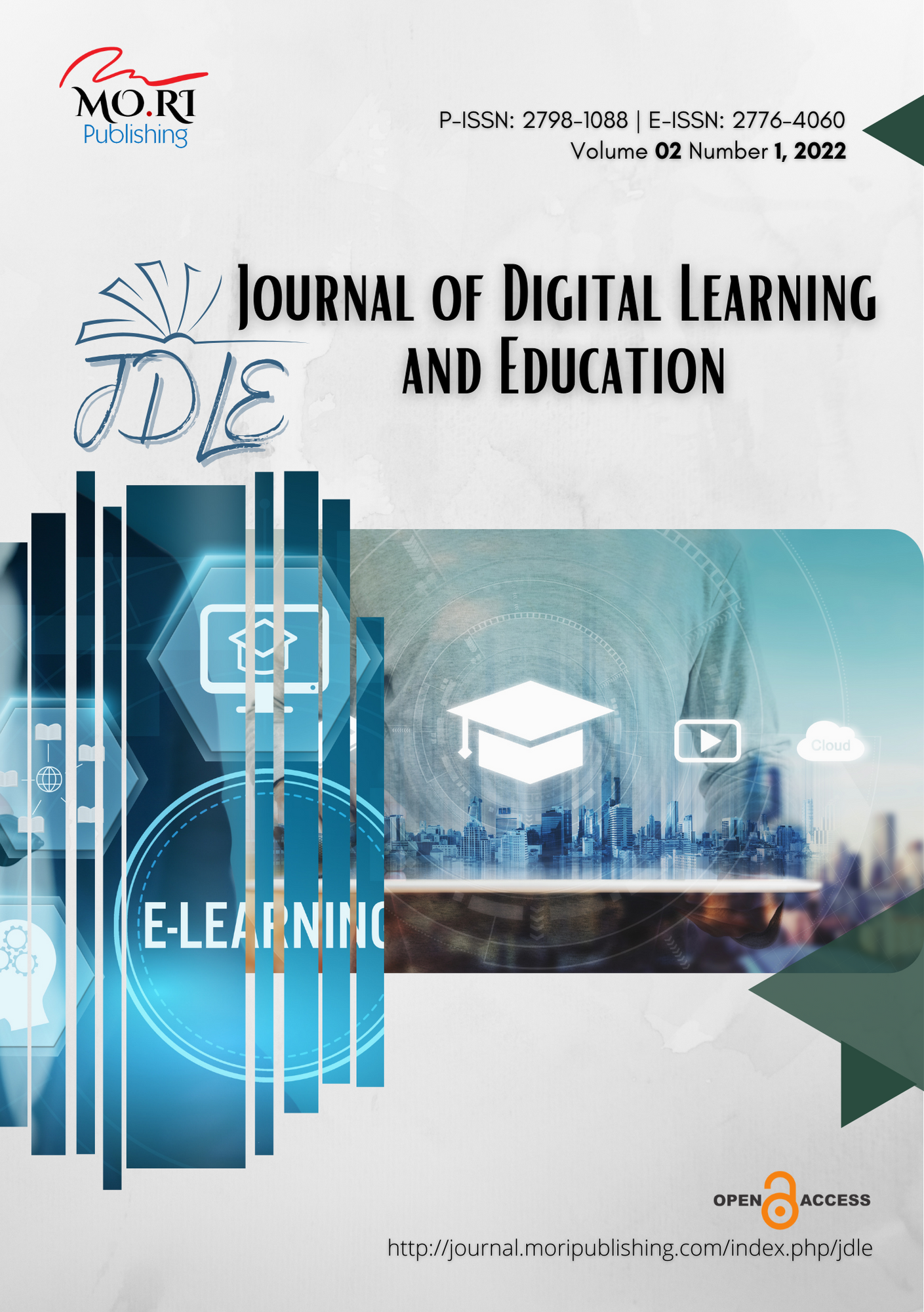Geographical Information Systems as Learning Resources for Social Studies: A Literature Review
DOI:
https://doi.org/10.52562/jdle.v2i1.325Keywords:
Geographic Information Systems, Learning Resources, Social Studies, Exploring, Benefits and Literature ReviewAbstract
The use of innovative and advance resources like those of Geographical Information Systems (GIS) to for Social Studies can aid the actualization of the aims and objectives of Social Studies education in Nigeria. This theoretical paper pointed out the fact that Geographical Information Systems can be used to achieve quality Social Studies education in Nigeria through exploring available literature to provide a good understanding of the topic under review. The paper adopted an analytical approach through extensive review of literature around the major variables which are Geographical Information Systems and Social Studies. It further discussed the relationship between Social Studies and Geographical Information Systems as well as the benefits which will be accrued to both learners and educators of Social Studies by using them as instructional references for Social Studies lessons. The paper concluded by explaining the benefits of applying Geographical Information Systems resources to Social Studies. These benefits include providing students with visual learning of Social Studies; studying the major themes of Social Studies through a spatial perspective; using stored information for education and applying technology to educational processes as it concerns learning in Social Studies.
Downloads
References
Akinlaye, F. A. (2003). Fundamentals of Social studies curriculum, planning and instructions. Pulmark Limited.
Aladag, E. (2014). An evaluation of geographic information systems in Social studies lessons: Teachers views Educational Sciences: Theory and Practice, 14 (4), 1533-1539.
Alibrandi, M. & Palmer-Moloney, J. (2001). Making a Place for Teacher Education with Geographic Information Systems (GIS). Contemporary Issues in Technology and Teacher Education [Online Serial], 1(4), https://citejournal.org/volume-1/issue-4-01/social -studies/article1-htm-18
Alibrandi, M. (2003). GIS in the classroom: Using GIS in social studies and environmental science. https://www.researchgate.net/publication/234612887.
Aytac, A. (2014). Geographical information systems place and importance in Social studies lessons. International Journal on New Trends in Education and Their Implications, 5(1), 198-208.
Bennett, C. (2019). What is GIS and how to use it in education. https://www.thoughtco.com/geographic-information-systems-in-class-4588257
Bednarz, S. W., & Ludwig, G. (1997). Ten things higher education needs to know about GIS in primary and secondary education. Transactions in GIS, 2(2), 123-133. https://doi.org/10.1111/j.1467-9671.1997.tb00020.x
Environmental Science Research Institute (ESRI), (2017). Introducing GIS to Colombian Social studies Teachers. https://www.esri.com/about/newsroom/arcnews/introducing-gis-to-colombian-social-studies-teachers/
Genapati, S. (2010). Using Geographical and Information System to increase citizen engagement. Washington, DC: IBM Centre for Business of Government.
Gokce, N. (2015). Social studies in improving students map skills: Teachers opinion. Educational sciences: Theory and Practice. 15(5), 1345-1362.
Golam, K. (2018). What is innovative teaching? www.researchgate.net.
Goodchild, M. F. (2009). Social Sciences: Interest in GIS grows. Social Sciences https://www.ncbi.nlm.nih.gov>articles.
Industry Focus (2015). Why GIS in education matters. https://www.industryfocus.com
Jarosievitz, B. (2011). ICT, multimedia used in the national and international educational projects. Informatika, 38, 22.
Karabas, S. & Sahin, S. (2007). The place of new geography curriculum in developing students’ word perception. Paper presented at the meeting of the changing geographies: Innovative curricula, the institute of education, London, U.K.
Kayer, E. (2012) in Gokce, N. (2015) Social studies in improving students’ maps skills: teaching opinions. Educational Sciences: Theory and Practice, 15(5), 1345-1362.
Kerski. J. J. (2004). GIS for citizenship education in J.J. Kerski. (2015) GIS and Social studies education. https://www.researchgode.net/publication/280554848
Kerski, J. J. (2015). GIS and Social studies education. https://www.researchgate.net/publication/280554848.
Krogman. M. (2015). GIS in Social studies. New Hampshire Society for Technology in Education (NHSTE). www.nhste.org/NHSTE_connects/3315348?tpg=2
Malik, S., & Agarwal, A. (2012). Use of multimedia as a new educational technology tool-A study. International Journal of Information and Education Technology, 2(5), 468. https://doi.org/10.7763/IJIET.2012.V2.181
McCloughlin, T. (2015). GIS in education: A research proposal submitted to Dublin City University. https://www.researchgate.net/publication/323918536
Musakwa, W. (2017). Perspectives on geospatial information science education: An example of urban planners in southern Africa. Geo-Spatial Information Science, 20 (2), 201–208. https://doi.org/10.1080/10095020.2017.1339403
Mzuza, M.K. & Westhuizen, C.P.V. (2019). Review on the state of GIS application in secondary schools in the southern African region. South African Geographical Journal, 29(4), 332-346. https://doi.org/10.1080/03736245.2019.1579110
Obro, S. (2021). The Internet and Quality Social studies Education for Sustainable Development in Post-Covid-19: A Review. Jurnal Penelitian dan Pengkajian Ilmu Pendidikan: e-Saintika, 5(1), 15-26. https://doi.org/10.36312/e-saintika.v5i1.425
Olatunde, F. (2006). Primary School Social studies curriculum and methods. National Open University of Nigeria (NOUN).
Reed, R., E & Bodzin, A., M. (2016). Using web GIS for public health education. International Journal of Environmental and Science Education,11(114), 6314-6333.
Sofadekan, A. O. (2012). Social studies education in Nigeria: The challenge of building a national. A Ph.D. Thesis submitted to department of Sport and Education, Brunel University, London.
Sousa, L. D., Richter, B. & Nel, C. (2017). The effect of multimedia use on the teaching and learning of social sciences at tertiary level: A case study faculty of education sciences North-West University, Potchefstroom campus. http://dx.doi.org/10.17159/2223-0386/2017/n17a
Ughamadu, K. A. (2012) Educational Technology and Micro-teaching for Teaching. Lincel Publishers.
United Nations Educational, Scientific and Cultural Organization (UNESCO), (2010). Education for all global monitoring report. A paper presented at a conference held at University of Uyo.
Vander Schee, J. (2003) Geographical education and citizenship education. International Research in Geographical and Environmental Education, 12(1), 49-53. https://doi.org/10.1080/10382040308667512
Downloads
Published
How to Cite
Issue
Section
License
Copyright (c) 2022 Onamrewho Favour Atubi, Peter Ogbianugene Dania

This work is licensed under a Creative Commons Attribution-ShareAlike 4.0 International License.














